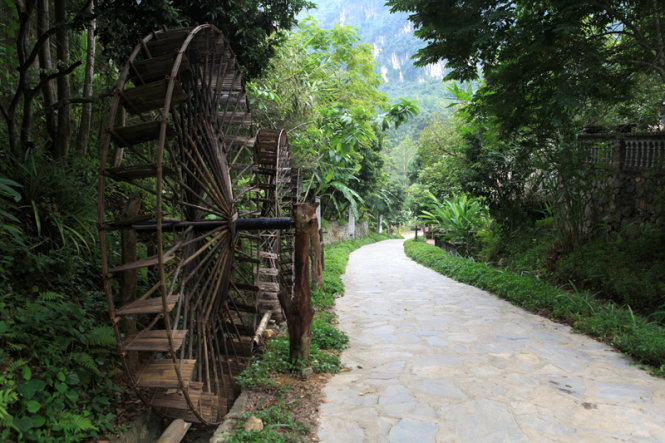A museum in a northern Vietnamese province is dedicated to displaying and preserving the gems of the Muong ethnic minority group’s culture and serves as an alluring ecological tourism site at the same time.
The Muong Culture Space Museum nestles on Tay Tien Street in Hoa Binh City, some 80 kilometers to the west of Hanoi.
The city was home to the ancient Muong people and is now the capital of an eponymous province.
Founded in 2007 as Vietnam’s first private museum for the Muong community and their rich culture, the five-hectare facility currently houses over 3,000 artifacts of various categories.
According to archives, the Muong ethnic people have quite a lot in common regarding ethnology and culture with their Kinh brethren. Kinh people make up the majority of the country’s population.
Muong people typically inhabit mountainous areas in such provinces as Hoa Binh and Thanh Hoa.
A 2009 demographic survey showed that Kinh and Muong groups accounted for 98.73 percent and 0.76 percent of the entire population, respectively.
Unlike most of its counterparts, the Muong Culture Space Museum displays its artifacts in a natural setting which is idyllic and teeming with gorgeous flowers and lush plants.
The entrance to the museum boasts several wooden water reels, which are a common sight in Vietnam’s mountainous areas, while other expanses are tastefully adorned with items including gongs and wooden statues which vividly depict Muong people’s habitat, culture, and lifestyle.

Some of the artifacts displayed at the museum. Photo: Tuoi Tre
The museum’s other highlights are four bamboo and palm leaf stilt houses, which are replicas of where members of the four classes ranging from court officials to the underprivileged in the ancient Muong society would live.
It also houses a studio where sophisticated works in sculpture, painting, and installation by local and international artists are showcased.
The studio is also a venue for art exhibitions to be held on a regular basis, and visitors are welcome to engage in the artists’ work or interact with them.

An installation artwork at the museum. Photo: Tuoi Tre
Its owner built a reservoir atop a hill within the museum complex to store spring water from the hills and mountains which stand aloft in the proximity.

The reservoir atop a hill which nestles within the museum complex. Photo: Tuoi Tre
The museum also offers meals and accommodation to visitors.
With all the delights it has to offer, the museum is thus a tempting, affordable rendezvous for weekenders to have picnics, delve into cultural highlights, and become one with nature as well.
The museum is open from 7:30 am to 5:30 pm every day and easily accessible by car or bike.
Visitors can also catch buses destined for Hoa Binh City from My Dinh Bus Station in Hanoi. Upon approaching the Cun slope, turn into Tay Tien Street in Thai Binh Ward.
Tickets cost VND50,000 (US$2.3) apiece.

A group of young students are pictured during a picnic in the museum complex. Photo: Tuoi Tre
Like us on Facebook or follow us on Twitter to get the latest news about Vietnam!




















































